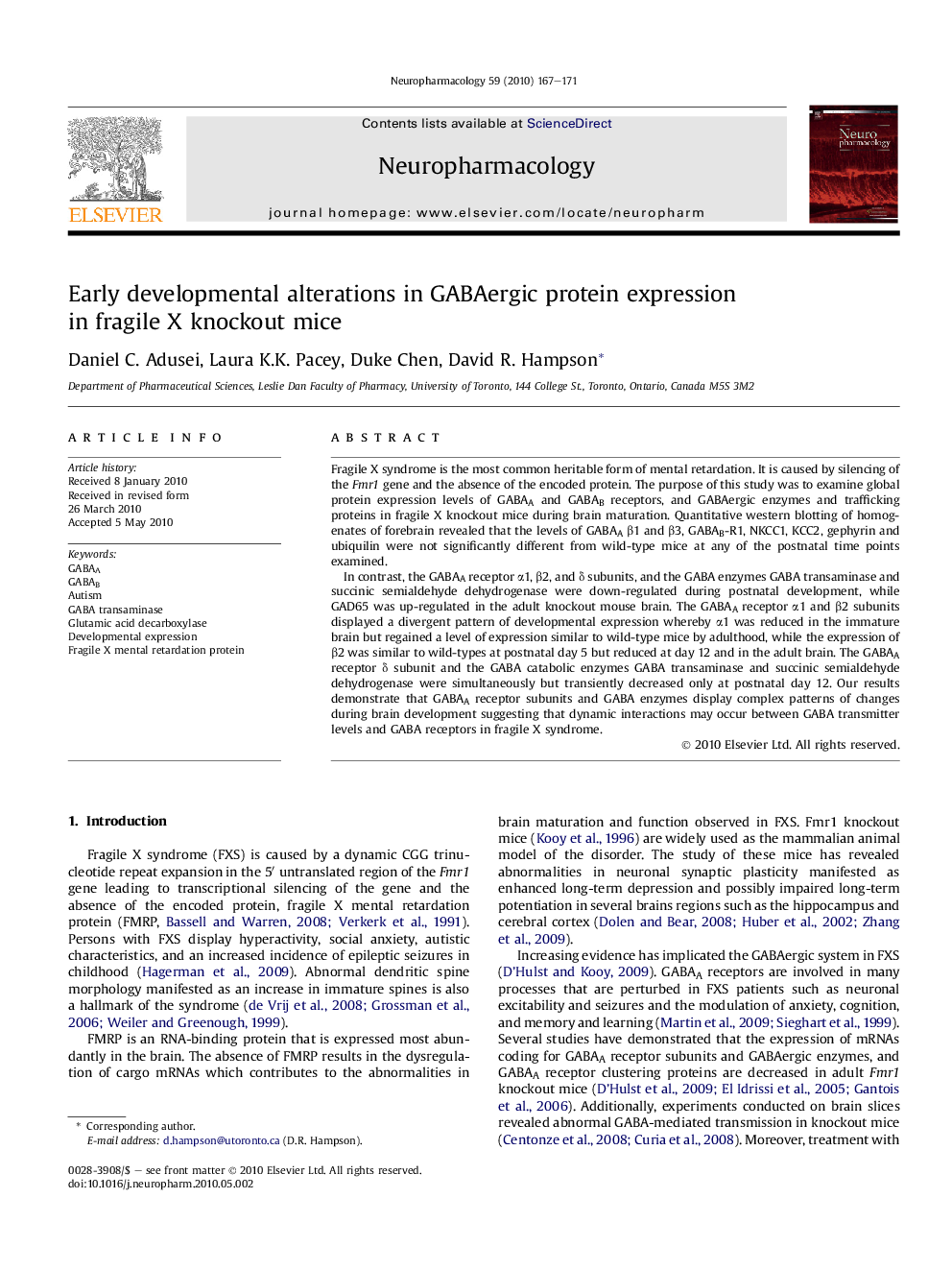| Article ID | Journal | Published Year | Pages | File Type |
|---|---|---|---|---|
| 2494072 | Neuropharmacology | 2010 | 5 Pages |
Fragile X syndrome is the most common heritable form of mental retardation. It is caused by silencing of the Fmr1 gene and the absence of the encoded protein. The purpose of this study was to examine global protein expression levels of GABAA and GABAB receptors, and GABAergic enzymes and trafficking proteins in fragile X knockout mice during brain maturation. Quantitative western blotting of homogenates of forebrain revealed that the levels of GABAA β1 and β3, GABAB-R1, NKCC1, KCC2, gephyrin and ubiquilin were not significantly different from wild-type mice at any of the postnatal time points examined.In contrast, the GABAA receptor α1, β2, and δ subunits, and the GABA enzymes GABA transaminase and succinic semialdehyde dehydrogenase were down-regulated during postnatal development, while GAD65 was up-regulated in the adult knockout mouse brain. The GABAA receptor α1 and β2 subunits displayed a divergent pattern of developmental expression whereby α1 was reduced in the immature brain but regained a level of expression similar to wild-type mice by adulthood, while the expression of β2 was similar to wild-types at postnatal day 5 but reduced at day 12 and in the adult brain. The GABAA receptor δ subunit and the GABA catabolic enzymes GABA transaminase and succinic semialdehyde dehydrogenase were simultaneously but transiently decreased only at postnatal day 12. Our results demonstrate that GABAA receptor subunits and GABA enzymes display complex patterns of changes during brain development suggesting that dynamic interactions may occur between GABA transmitter levels and GABA receptors in fragile X syndrome.
